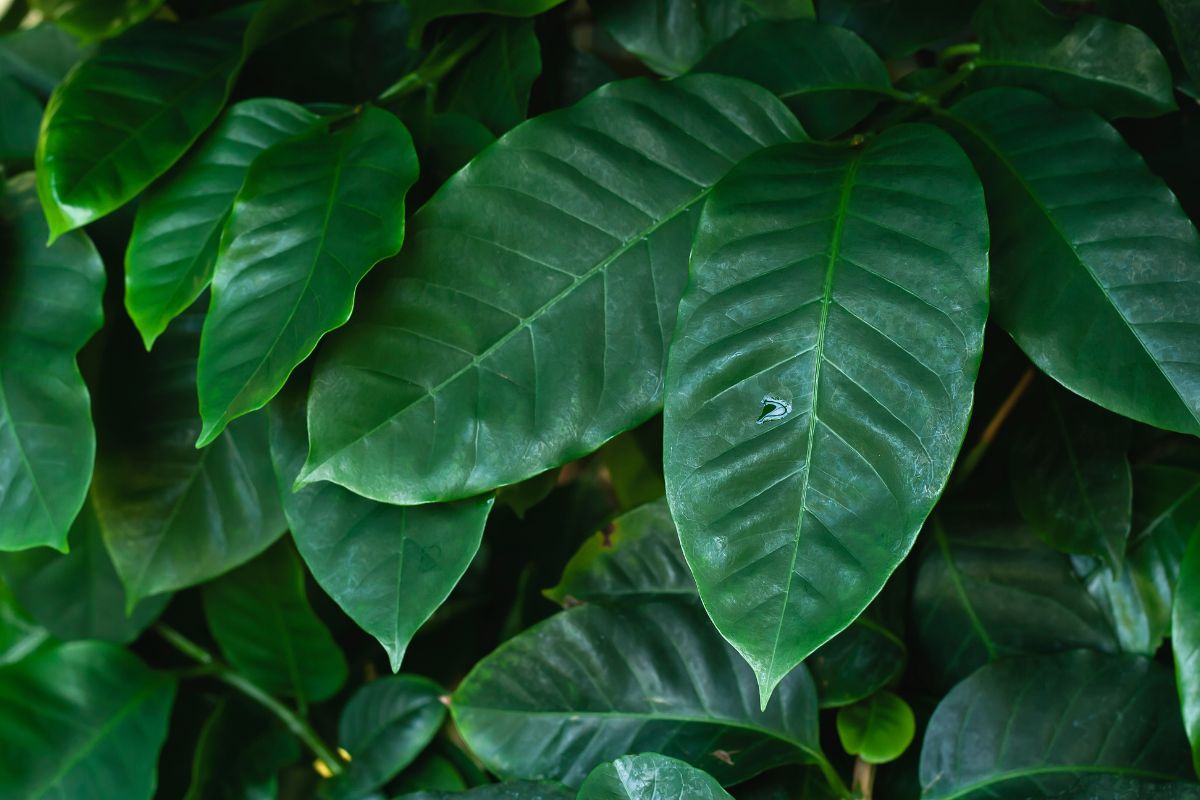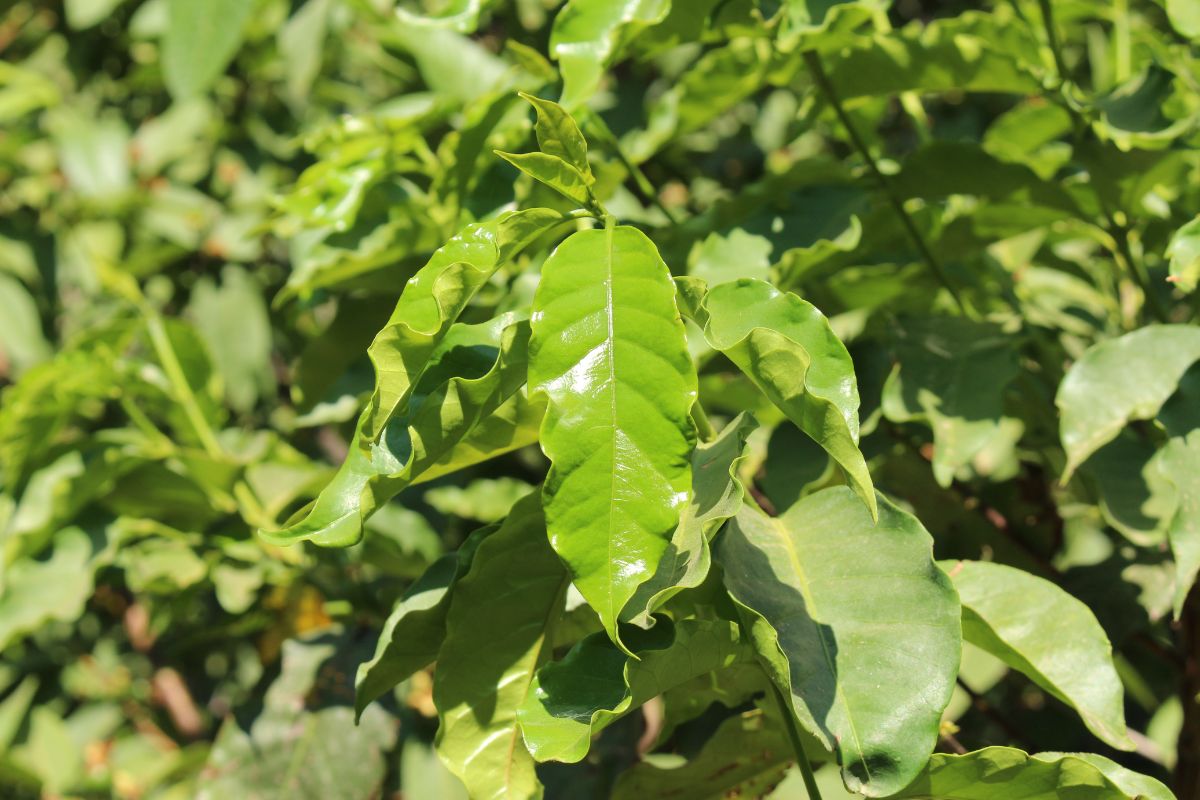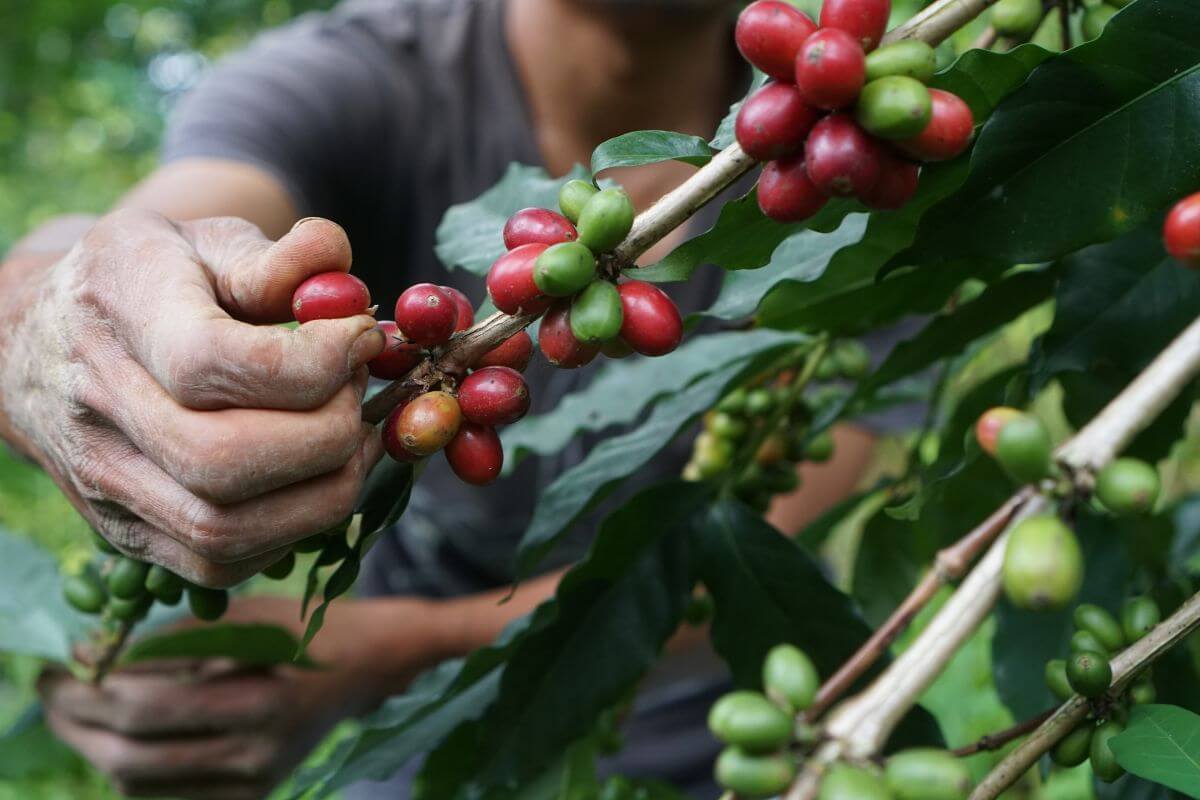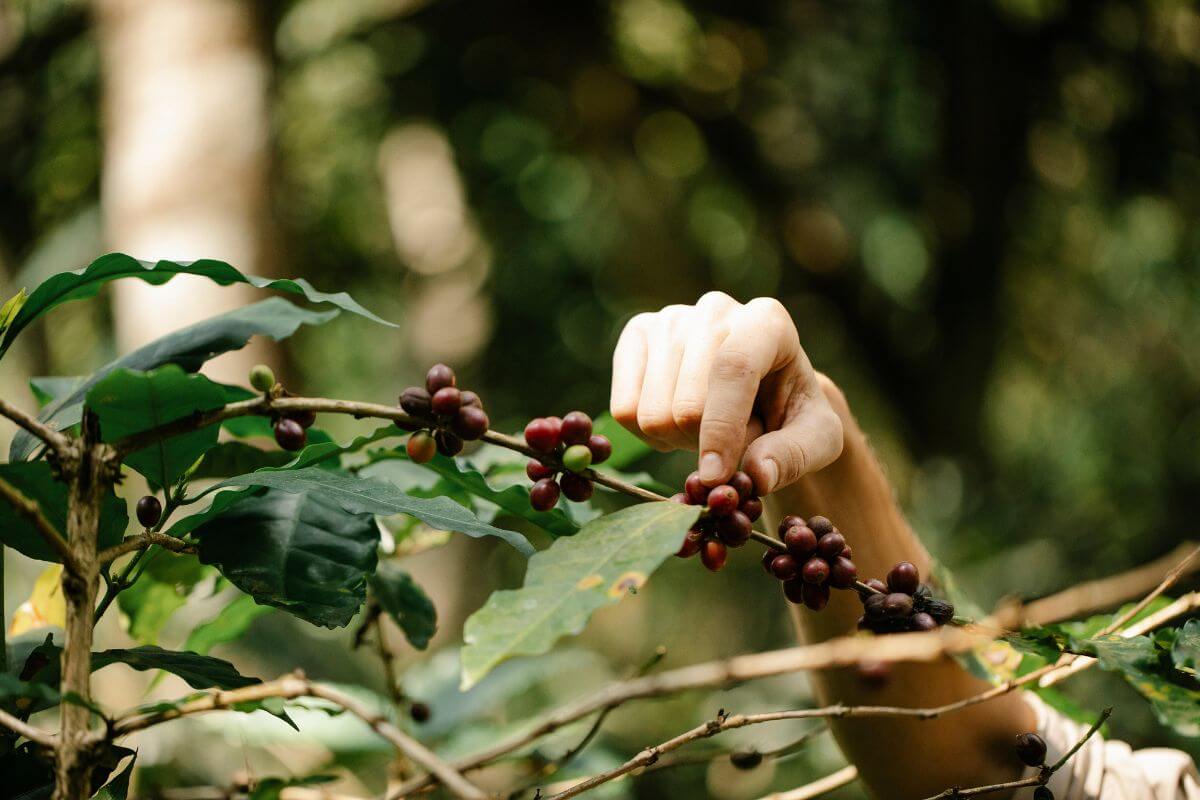Coffee plants are an incredibly popular houseplant. They require minimal care and are relatively inexpensive to purchase.
Attractive glossy green leaves make the coffee plant a beautiful houseplant that does exceptionally well when cultivated indoors.
The Coffea genus name refers to the word kahwah which signifies “beverage” in Arabic. Yes, the coffee plant can be turned into the beverage that is coffee.
If you want to ensure that your coffee plant thrives, let’s get into how to care for and grow the coffee plant.
Once your coffee plant has been properly cared for, you can enjoy the benefits of drinking fresh coffee for many years to come.
Coffee Plant Overview
The Coffea arabica (Arabian coffee) is native to Ethiopia where it will mature into a medium-sized tree. But coffee growers will usually prune these plants at sizes that are more easily managed. When cultivating indoors, pruning will be essential to containing growth.
Coffee plants should be started in the early spring and even if these plants are robust growers, it will take several years for them to flower and produce fruit.
Generally, these plants will bloom in the spring with petite white flowers. Afterward, green berries about a half-inch in size will appear, these cannot be eaten. They’ll mature to become yellow, then light red, dark red, and eventually develop into black pods, aka coffee cherries.
Each black pod will contain two seeds. The seeds are extracted and left to dry in the sun. They’re then roasted to become the well-known coffee beans that are used to brew your favorite cup of coffee.
There are over 120 different plant species in the Coffea genus, among which you’ll find:
- Coffea canephora is from sub-Saharan Africa are robust plants, but offer a harsher, stronger taste.
- Coffea eugenioides originates in East Africa and has beans with lower caffeine content.
- Coffea liberica is a species that is native to both Central and Western Africa. It boasts larger fruits than other varieties with higher caffeine content.
- Coffea Arabica “Nana” is a dwarf plant that will only grow to about a foot in height, making it ideal for indoor cultivation.
Coffee Plant Care

This evergreen perennial can grow from six to fifteen feet tall and wide. When cultivating a coffee plant, it is important to try and reproduce their native habitat of a mid-elevation, tropical hillside.
That means giving it generous watering with good drainage, cool temperatures, high humidity, and a soil bed that is rich and slightly acidic.
If your garden is in a zone that mimics these conditions, your coffee plant can be grown outside. An indoor coffee plant will require bright indirect light, not direct sunlight.
These plants should be protected from drafts and air conditioning vents. The soil bed should be kept moist with weekly watering.
Soil for the Coffee Plant
The ideal soil bed for a coffee plant should be peat-based potting soil that ensures exceptional drainage. They like slightly acidic and rich soil.
If your plant does not appear to be thriving, you can add organic matter to increase the soil bed’s pH. Sphagnum peat moss is a good soil amendment to add too.
While your coffee plant will grow in a soil bed with a pH level between 4 and 7, the best pH level will measure between 6 and 6.5.
Light for the Coffee Plant

Dappled sunlight is best for your coffee plant as they usually grow under other plants in nature.
They will not thrive in harsh, direct sunlight. If they are overexposed to sunlight, the leaves will begin to brown and scorch.
Water and Humidity for the Coffee Plant
The coffee plant loves water and needs to be watered regularly. The soil bed should be moist, but never soggy or waterlogged. The soil bed should never dry out completely either.
Coffee plants crave high humidity. In its native habitat on a tropical hillside or mountainside, it grows in humid conditions that include both fog and rain.
When cultivating indoors, the humidity should sit above 50%. When kept in dry air, leaf edges will begin to brown. You can mist your plant daily to help create sufficient humidity or use a space humidifier.
Another option to add humidity is to use a pebble tray. Place pebbles or stones in a shallow tray and add water to just below the top of these stones. Place the container pot on top of the stones.
The bottom of the container should not come into contact with the water in the tray. The water will gradually evaporate, adding moisture into the air surrounding your plant.
Coffee plants can also be placed in bathrooms and kitchens, where humidity tends to be higher. Or, if you have other humidity-loving plants, you can group them together. Their collective moisture will increase humidity levels for all of them.
Temperature for the Coffee Plant
The coffee plant likes daytime temperatures that fall into a range between 70° and 80° Fahrenheit. In the evening and night, temperatures can drop to 65°F for them.
If these plants are cultivated in higher temperatures, they will grow more rapidly, but this is not ideal for the beans. The coffee beans need to ripen gradually at a steady pace.
Fertilization for the Coffee Plant
A diluted liquid fertilizer given biweekly during the growing season will make for a happy plant. In the winter, fertilizer time can be extended to monthly.
Coffee Plant Pruning and Repotting

Because Coffee plants can grow from ten to fifteen feet in height, this size is not that manageable in most homes. Therefore, pruning your Coffee Bean plant is an obligation and not really a choice.
If your Coffee Plant is still a manageable size, it may be sufficient to pinch off any new growth. This will contain the height and help the plant attain a bushier appearance.
Larger plants may require cutting back. Radical pruning will not harm this plant in any way. Pruning should be done during the spring months.
With sterile sharp pruning or gardening shears, cut the stem you wish to prune at a 45° angle above the point of leaf attachment. Trim top plant growth to control height.
Remove plantlets and any dead or dying branches, while leaving the large limbs in place. Cuttings from pruning can be eventually used for propagating other coffee plants.
Your coffee plant needs to be repotted every spring in a pot that’s the next size up. Pots should have drainage holes. To help contain the plant’s size when repotting, you can prune the roots to contain its growth.
Propagating the Coffee Plant
When it comes to propagating, you will need to either acquire coffee plant seeds or use your seeds from a coffee plant you already own.
These plants can also be propagated using stem cuttings or air layers to create new plants.
Take a cutting in early summer. When cutting, choose a straight shoot that measures approximately 10 inches in length. Remove all leaves except for the upper two.
Now place the cutting in a small container with soilless potting mix. Keep the soil moist until when you feel some resistance when pulling on the plantlet. If you feel some resistance, roots will have formed.
Coffee Plant Toxicity and Pets
All parts of the coffee plant are considered toxic for dogs, cats, birds, horses, and other animals.
This is also true for toxicity to humans, except for the fruit when it matures into coffee bean that most of us know. Yellow or red berries are not edible, only coffee beans can be ingested.
Common symptoms of poisoning from ingesting the coffee plant include:
- Diarrhea
- Lack of appetite
- Nausea
- Vomiting
- Irregular heartbeat
- Seizures
In cases of severe poisoning, it can be fatal for animals. Severe poisoning can be found in humans, although it does not usually lead to death.
If any part of the coffee plant other than the dried coffee bean is ingested, you should contact your local poison control center, medical doctor, or veterinarian immediately.
Coffee Plant Pests, Diseases, Problems, and More
Like other houseplants, coffee plants grown indoors can be susceptible to infestations of aphids, mealybugs, and mites.
If you see insects on your plant, white cotton-like deposits, or small spider webs, you need to treat your plant immediately. This is important, especially if you have other plants nearby where an infestation can spread.
I always try to use organic pest control methods before non-organic. Try using an organic insecticidal soap or neem oil initially. If that doesn’t work, then try chemical insecticide to save the plant.
Coffee Bean Harvesting

Yes, you can harvest the coffee berries to make your own coffee! Berries will be produced after your plant has matured, which can take anywhere from three to five years.
When your plant’s berries have ripened to deep red and are soft, pinch them off by hand. Pulp the berries in a container of water and remove the coffee beans from within.
Place the harvested beans on a woven mesh rack to be dried. This may take days to weeks depending on where you live. The beans must be sufficiently dried for their skin to easily flake off.
You can now grind your coffee beans in a coffee mill and enjoy your own homegrown, home-brewed coffee.
Growing Coffee Plant Final Thoughts
As an easy-to-grow and hardy houseplant, the Coffee Plant is a terrific choice for both beginner and experienced home gardeners.
It’s a nice addition aesthetically, and you can even grow your own cup of coffee right at home.
If you’re looking for other houseplant grow guides, check out these articles:
Growing Coffee Plant FAQs
Can I grow a coffee plant in my house?
Yes, you can grow the beautiful coffee plant indoors all year round. They can grow from 10-15 feet tall, so you’ll want to manage its height by regular pruning. They like bright, indirect light with high humidity. Be sure to water it regularly as well.
Do coffee plants smell like coffee?
No, coffee plants don’t actually smell like coffee. But many people still find the aroma to be pleasant when growing them inside. You may even notice a slight hint of citrus scent.
How big do coffee plants get?
As a houseplant indoors, coffee plants can grow up to 6-7 feet if its growth is managed well. When out in the wild, coffee plants can grow up to 32 feet (10 meters) in its optimal, tropical climate near the equator.
Can you eat the coffee berry?
The coffee berry is can be eaten and even give you a morning jolt as it contains caffeine. However, they also contain tannins and polyphenols which give coffee its bitter taste. These compounds make the berry unpalatable, but still edible.
How hard is it to grow your own coffee plant and make your own coffee?
This depends entirely upon how much time and effort you put into caring for your coffee plant. It’s not difficult to care for this indoor plant once you know what needs to be done. You will need to wait until the coffee plant matures, which can take 3-4 years, before you’ll be able to make you own coffee though.
How much yield from new coffee plants?
A single mature coffee plant produces about 1-2 pounds of coffee beans per year. That comes out to about 48 six-ounce cups of coffee per pound. If you’re a heavy coffee drinker, you’ll want to grow more than one plant at a time.
How Fast Does a Coffee Plant Grow?
In general, most coffee plants are slow growers. Most varieties will grow between 1-3 feet per year and take 3-4 years to reach maturity.


